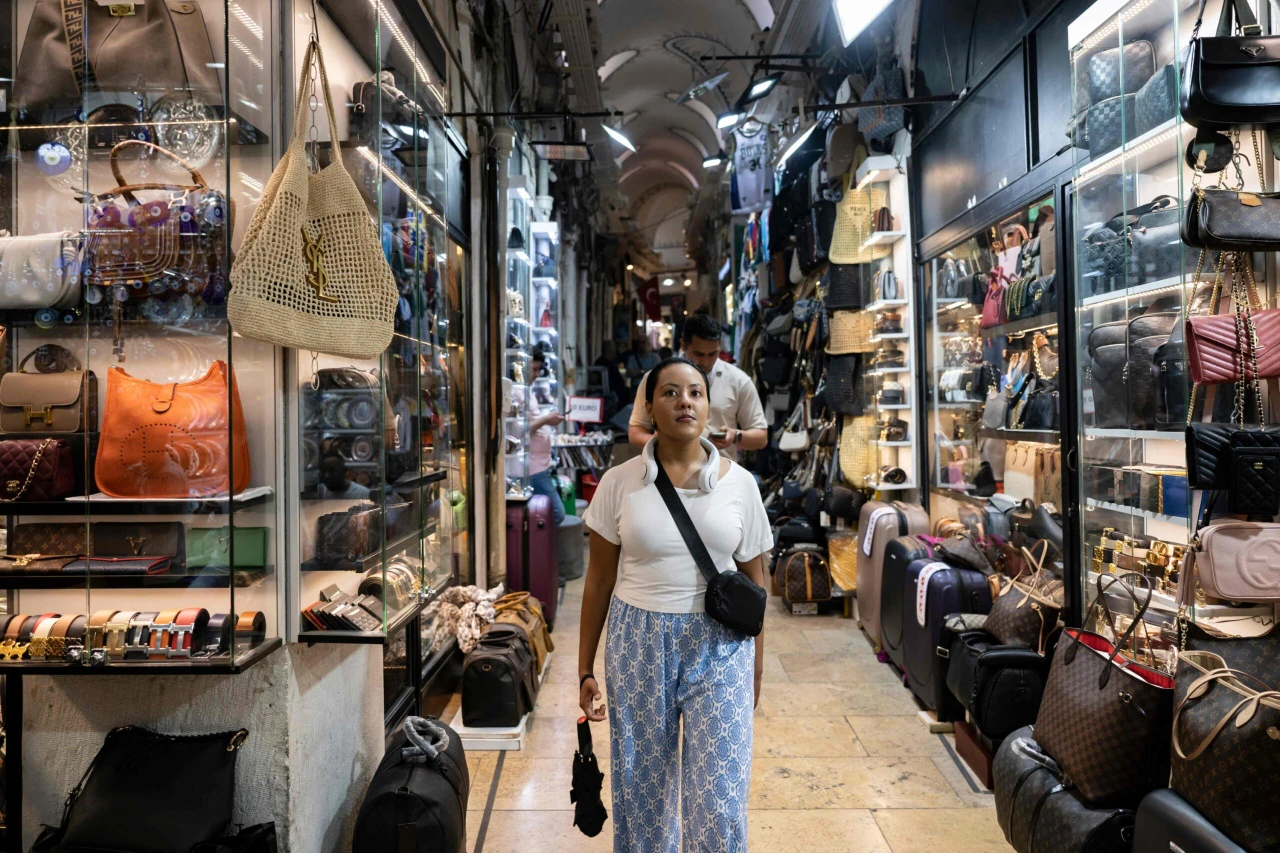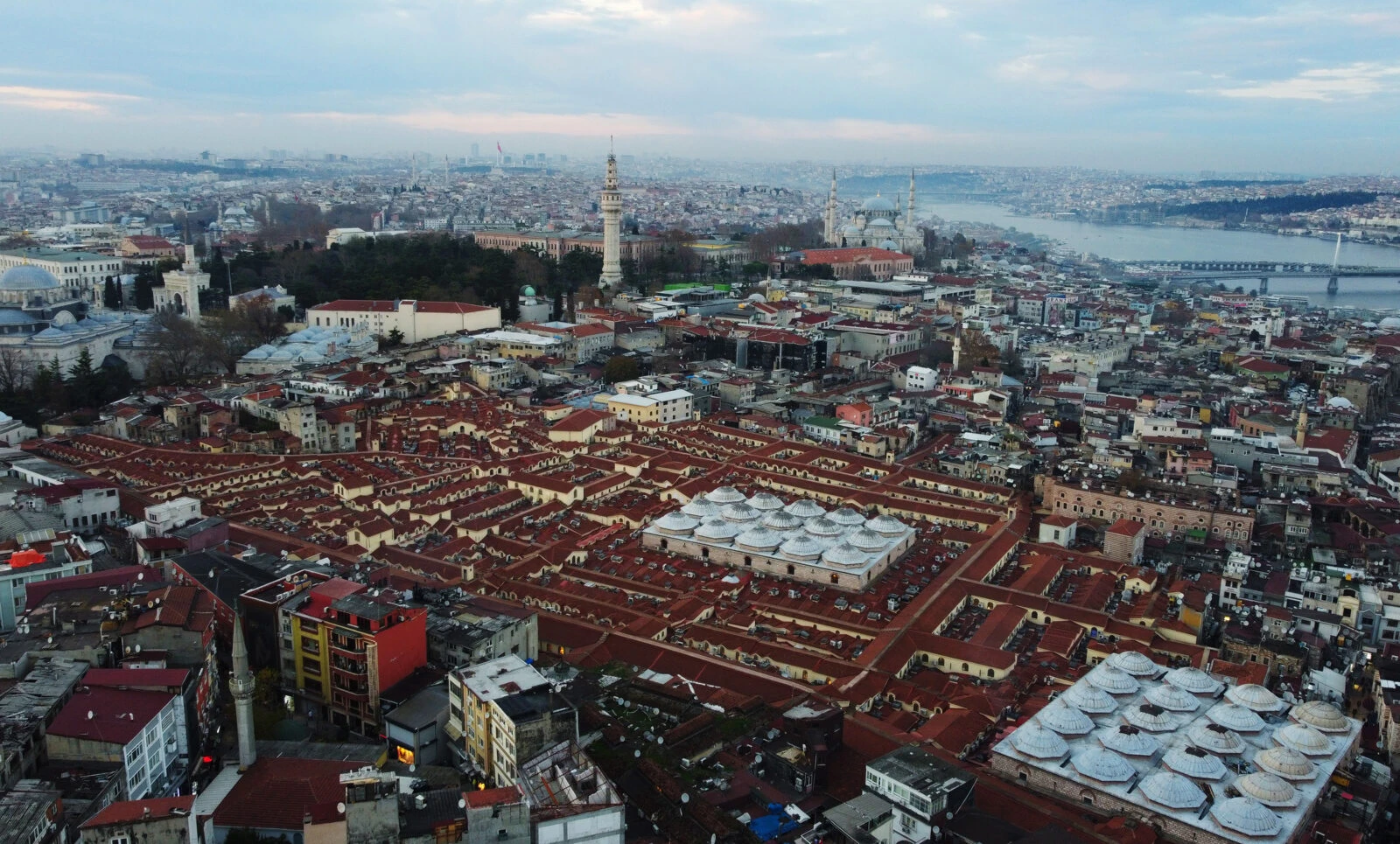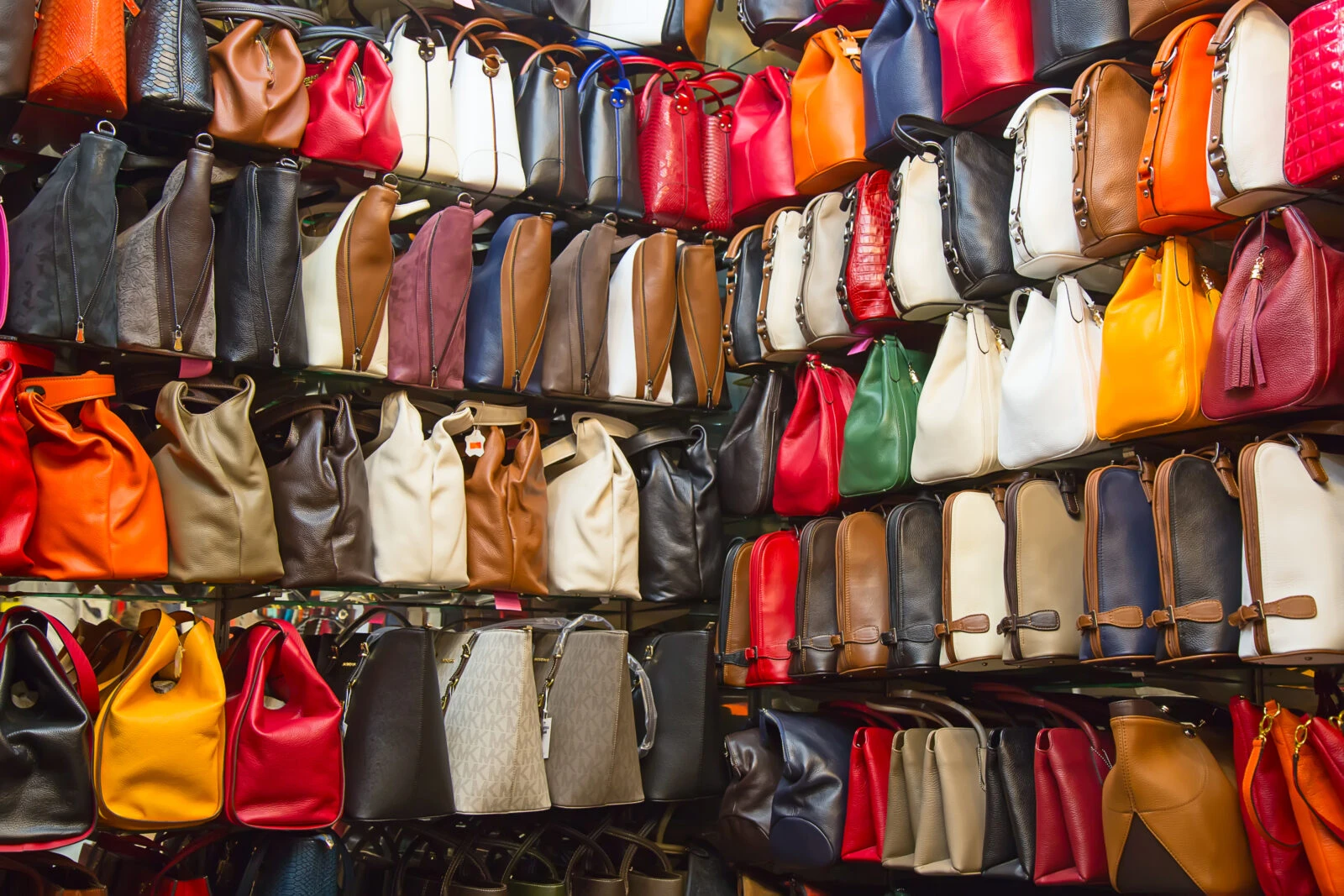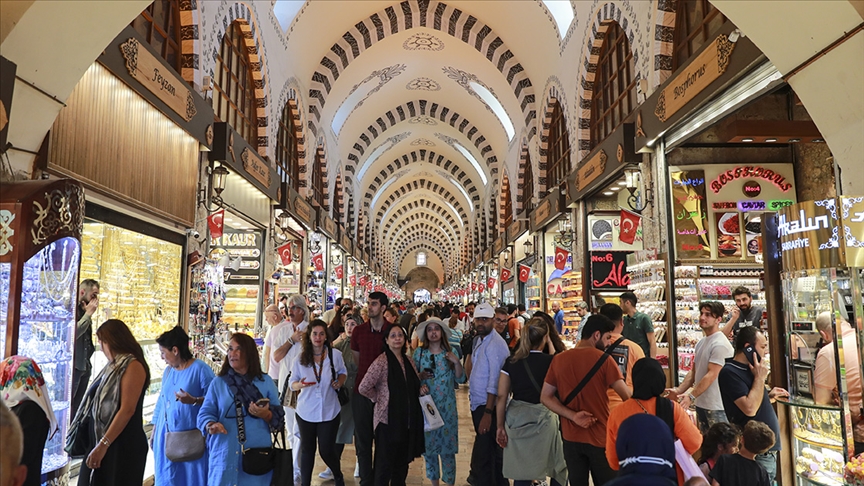Is the heart of Istanbul’s Grand Bazaar being replaced by fakes?
 Visitors stroll past shops in the historic Grand Bazaar, Istanbul, Türkiye, on July 9, 2024. (AFP Photo)
Visitors stroll past shops in the historic Grand Bazaar, Istanbul, Türkiye, on July 9, 2024. (AFP Photo)
Once a hub of heritage craftsmanship, Istanbul’s Grand Bazaar now finds itself overwhelmed by counterfeit luxury goods, with traditional merchants warning that the influx of fake high-end brands is stripping the market of its authentic character.
The Grand Bazaar, one of the world’s largest and oldest covered markets, has long been celebrated for its vibrant displays of traditional Turkish arts and crafts. However, in recent years, stores selling counterfeit luxury goods have increasingly filled the market’s corridors, challenging the identity that once made it iconic.

Hasim Gureli, a carpet seller and vice-president of the Bazaar’s traders’ association, recalled a time when imitations were rare. “Back in the day, imitations were hidden. They were afraid of the state,” he said, reminiscing about a time when the Grand Bazaar‘s unique character was preserved.
The struggle of traditional artisans
Merchants selling genuine, handmade goods find it increasingly difficult to compete with the cheaper, counterfeit alternatives. Gazi Uludag, who has a tea set shop in the Bazaar, expressed his concern, stating, “There is nothing but imported or counterfeit goods left, and it’s getting worse every year.”
Florence Heilbronn-Ogutgen, a store owner since 1998, bemoaned the decline of artisanal craftsmanship, saying that many talented artisans have been forced to close their businesses. “These days, the finest boutiques are the counterfeit ones!” she said, lamenting the loss of the Bazaar’s soul.

The allure of cheap luxury
Despite its growing reputation for counterfeits, the Grand Bazaar continues to draw millions of tourists, many of whom are attracted by the promise of discounted luxury items. One vendor, Kemal, who has sold counterfeit designer handbags for years, boasted, “If you can find it on the Champs-Elysees, you can find it here.”
Kemal, who sells imitation bags made from calfskin and quilted leather, claims his products offer the same quality as the originals but at a fraction of the price—five to ten times cheaper than their authentic counterparts.
Profitable but controversial market
Türkiye, alongside China and Hong Kong, is one of the world’s largest producers of counterfeit goods. The trade-in knock-offs support an entire underground economy, benefiting everyone from small retailers to large-scale manufacturers who export their goods across borders, including to the European Union.
Dilara Bural, a criminologist at the University of Bath, highlighted the substantial profits generated by the counterfeit trade. “Handbags sold for thousands of dollars in the Grand Bazaar make very high profits,” she noted, pointing out that while some counterfeit operations may be linked to organized crime, not all counterfeiters in Türkiye are involved in illicit networks.

Legal challenges in combating counterfeits at Grand Bazaar
While luxury brands and law firms are working to combat the counterfeit market, the sheer scale of the problem makes enforcement a daunting task. Lawyer Sena Yasaroglu explained that raiding shops and confiscating counterfeit goods is a complex and costly process, requiring multiple search warrants for the thousands of stores in the Grand Bazaar.
Despite ongoing inspections by Istanbul police, enforcement remains a challenge. “The problem is, you need to get search warrants for every address,” Yasaroglu said, acknowledging the difficulty of tackling the issue effectively.
Some shopkeepers, like Murat, who rents a tiny 2.5-square-meter shop for $1,000 a month, are undeterred by the risk of fines and legal action.
“I have no choice,” he said, recalling a police raid in 2018 that led to a fine of $45,300 and the seizure of 800 fake handbags. “Otherwise, what would I do? Go back to be a shepherd in my village.”
As long as the demand for counterfeit luxury items remains high, the Grand Bazaar continues to be a battleground between traditional craftsmanship and the lucrative counterfeit market.



